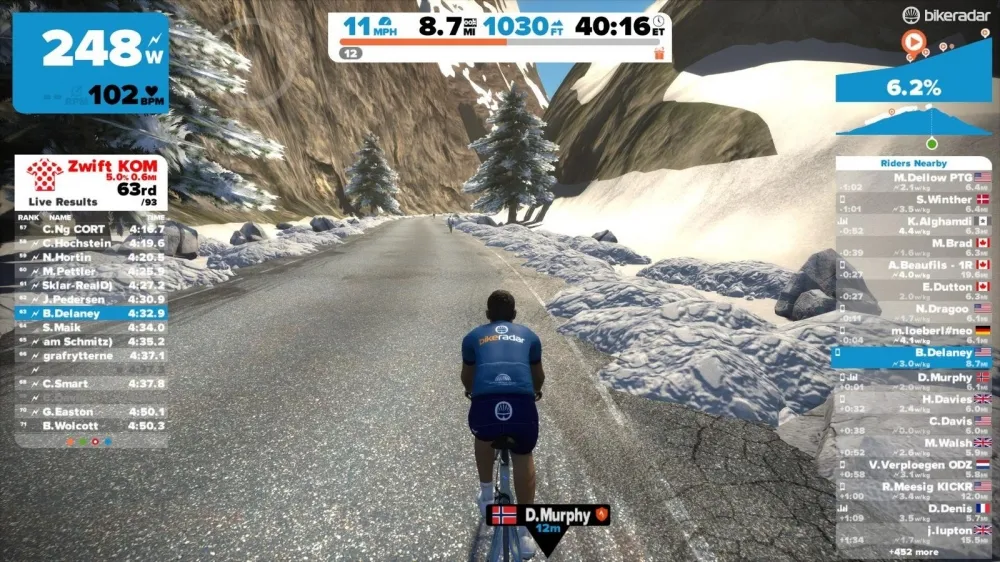Each day, I pedal my way through a large park, which is crisscrossed by bike paths, on my way to ride roads or trails. A strange thing happened in this park a couple weeks ago.
In addition to the usual assortment of dog-walkers, joggers and fellow cyclists, I began to notice many new people — kids as well as adults — who were glued to their smartphones. They walked around seemingly oblivious to their surroundings as they attempted to catch the ever elusive Pokémon.
Now when I head out for rides I swerve around these Pokémon Go players, who remain unaware of anything that’s not an animated creature displayed on their phone. At least they're getting some modicum of exercise. It certainly beats sitting on a couch in a dimly-lit basement playing against folks half a world away. So long as you don't get hit by a car, don't get mugged, or walk off a cliff — all things that have happened to hapless "PoGo" players in recent weeks.
There’s no hyperbole in stating that this augmented reality smartphone game has taken the world by storm. For those not familiar with the term, augmented reality refers to live, direct or indirect views of the real world supplemented (or augmented) with computer-generated images, sounds and experiences.
While you might not be interested in catching Pokémon, augmented reality is very likely to play a role in cycling in the years to come.
Estimates vary, but conservative assessments put the number of Pokémon Go users in the United States alone at more than 10 million people since its release on 6 July. That’s a lot of folks walking around staring at the world through tiny screens and trying to catch imaginary monsters.
We cyclists can’t be bothered with such trivial games. Instead of chasing animated creatures on smartphones, we spend our time chasing fellow users on Strava or Zwift, which is much better, right? Right?
While you might not be interested in catching Pokémon, augmented reality is very likely to play a role in cycling in the years to come.
“When you think about augmented reality and smart eyewear and how it could make the cycling experience more enjoyable or improve performance there are great opportunities,” says Tom Fowler.
Fowler is Intel’s director of sales and marketing for head-mounted wearables. He was part of Recon before the company was acquired by Intel in early 2015. Fowler thinks there are many exciting ways to improve cycling through data that’s viewable at a glance.
It should come as no surprise that the companies that see the potential of augmented reality in cycling are those pushing for data to be integrated into eyewear.
In the very near future Recon, Garmin and Solos want to get riders monitoring data through heads-up displays, rather than computers mounted to handlebars.
Further out on the horizon, the possibilities for augmented reality in cycling grow much wider than simply monitoring wattage or checking your route through turn-by-turn navigation.
What if you could look through your eyewear and see more than just the road ahead? What if you could also see virtual training partners? What if the virtual world of Zwift Island came to the real world?
Augmented reality could allow riders to ‘gamify’ the cycling experience in ways that Strava and Zwift have only cracked the surface.
Riders could keep pace with a simulated peloton. You could race against a digital doppelgänger to track your current progress versus past efforts. This is something that’s currently offered through Strava, but it’s not as effective as riding against an actual — or virtual — riding partner.

Virtual training partners could also help riders learn proper group ride etiquette. Tutorials could teach new riders valuable skills such as how to move through a paceline or how to ride in an echelon.
But could a virtual riding partner alert you to broken glass or potholes? Probably not. And therein lies the problem.
“With augmented reality, we have to be mindful that we’re still living in a real world, and the real world has a whole bunch of things that need to be managed and paid attention to — potholes come up, dogs run out and car doors open,” notes Fowler.
According to Fowler, it wouldn’t be hard to augment cyclists’ reality today and to provide all sorts of gamification. Finding the right approach that balances useful data as well as safety is the challenge.
“It’s important to be respectful of the ‘reality’ part of augmented reality,” he added.
If the clueless Pokémon Go players I encounter each day are any indication, we've got a long way to go on this front.
Is augmented reality good for cycling?
Do you think augmented reality could help (or harm) cycling? Sound off in the comments section below.

